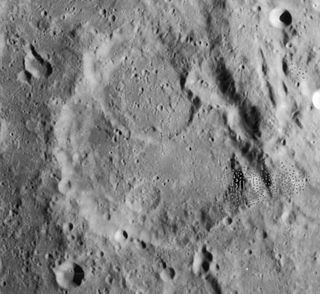
Catharina is an ancient lunar impact crater located in the southern highlands. It was named after Saint Catherine of Alexandria. It lies in a rugged stretch of land between the Rupes Altai scarp to the west and Mare Nectaris in the east. To the west-northwest is the crater Tacitus, and the lava-flooded Beaumont lies to the east along the shore of Mare Nectaris. To the south-southeast is Polybius.

Väisälä is a tiny lunar impact crater located on a rise in the Oceanus Procellarum. Sharing the same continental island are the brilliant crater Aristarchus to the south-southeast and Herodotus to the south-southwest. Väisälä lies just to the west of the Rupes Toscanelli fault line, and the Rimae Aristarchus rille system. To the southwest is the notable Vallis Schröteri cleft.

Cauchy is a small lunar impact crater on the eastern Mare Tranquillitatis. It was named after French mathematician Augustin-Louis Cauchy. It is circular and symmetric, with a small interior floor at the midpoint of the sloping inner walls. Due to the high albedo of this bowl-shaped formation, it is particularly prominent at full Moon.

Tacitus is a lunar impact crater located to the northwest of the crater Catharina, at the northern extension of the Rupes Altai ridge line. It was named after the 1st century Roman historian and writer Tacitus. Directly west is the crater Almanon, and to the northeast is Cyrillus. To the southeast of Tacitus is a long chain of craters named the Catena Abulfeda. This chain runs to the northwest from the eastern edge of the Rupes Altai, continuing for over 200 kilometers.
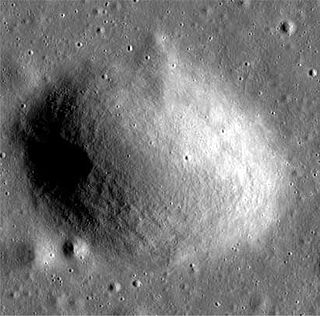
Donna is a tiny lunar crater on the near side of the Moon. Its name is an Italian female given name, and does not refer to a specific person. It is located in the eastern half of the Mare Tranquillitatis, at the summit of the lunar dome Omega (ω) Cauchy. As such domes are thought to be volcanic in nature, it appears likely that this crater was created by an eruption. This is in contrast to most lunar craters, which are now believed to be created by impacts. This crater is sufficiently small that it requires a large telescope to resolve.

Antoniadi Dorsum is a ridge on Mercury at 25.1°N 30.5°W, and it is approximately 359 km in length. In 1976, it was named by the International Astronomical Union after Eugène Michel Antoniadi.

The Eminescu quadrangle (H-9) is one of fifteen quadrangles on Mercury. It runs from 216 to 288° longitude and from -25 to 25° latitude. Named after the Eminescu crater, it was mapped in detail for the first time after MESSENGER entered orbit around Mercury in 2011. It had not been mapped prior to that point because it was one of the six quadrangles that was not illuminated when Mariner 10 made its flybys in 1974 and 1975. These six quadrangles continued to be known by their albedo feature names, with this one known as the Solitudo Criophori quadrangle.

Matisse is an impact crater on the southern hemisphere of Mercury. Matisse takes its name from the French artist Henri Matisse, and it was named by the IAU in 1976.

Izquierdo is a crater on Mercury. Its name was adopted by the International Astronomical Union (IAU) in 2009, for the Mexican painter María Izquierdo. The floor of Izquierdo is smooth, the result of having been partially filled with volcanic lava. Circular outlines of the rims of “ghost craters” – smaller, older craters that have been largely buried by the lavas that infilled the basin – are visible in a few places on Izquierdo's floor. The remnants of a buried inner ring are also barely discernible in spots, and it is one of 110 peak ring basins on Mercury. There have been more recent impacts into the floor of Izquierdo, resulting in some small, sharply defined craters.

Holbein is a crater on Mercury. Its name was adopted by the International Astronomical Union (IAU) in 1979. Holbein is named for the Germain painters Hans Holbein the Elder, who lived from 1465 to 1524, and Hans Holbein the Younger, who lived from 1497 to 1543.

Leopardi is a crater on Mercury. Its name was adopted by the International Astronomical Union in 1976. Leopardi is named for the Italian writer Giacomo Leopardi, who lived from 1798 to 1837.

Neumann is a crater on Mercury. It has a diameter of 120 kilometers. Its name was adopted by the International Astronomical Union (IAU) in 1976. Neumann is named for the German architect Johann Balthasar Neumann, who lived from 1687 to 1753.

Caravaggio is a large crater on Mercury. The crater was named after the Italian painter Caravaggio by the IAU in 2013.
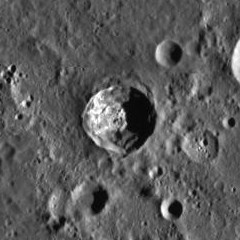
Calder is a small crater on Mercury. Its name was adopted by the International Astronomical Union (IAU) in 2013. Calder is named for the American sculptor Alexander Calder.

Seuss is a crater on Mercury. Its name was adopted by the International Astronomical Union (IAU) in 2012. It is named for the American author and cartoonist Theodor Seuss Geisel, better known as Dr. Seuss.
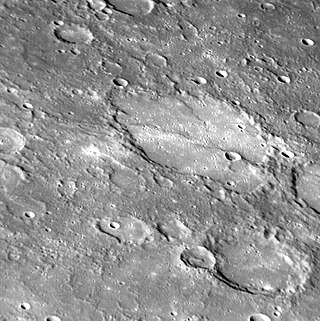
Savage is a crater on Mercury. Its name was adopted by the International Astronomical Union (IAU) in 2013, and is named for the American sculptor Augusta Savage.

Vazov is a crater on Mercury. Its name was adopted by the International Astronomical Union (IAU) in 2020. The crater is named for Bulgarian poet Ivan Vazov.
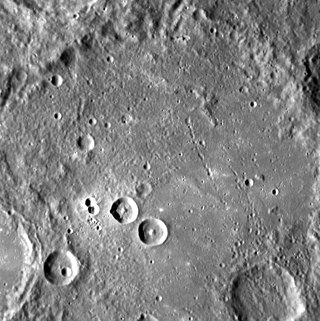
Pushkin is a crater on Mercury. Its name was adopted by the International Astronomical Union (IAU) in 1976. Pushkin is named for Russian poet Alexander Pushkin.



















